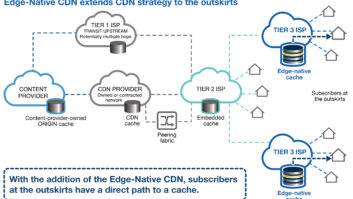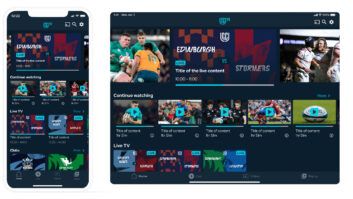The days when viewers gathered around the TV at a certain time to watch their favourite program are long behind us. Since the introduction of OTT services, viewers have become accustomed to watching content whenever and wherever they like and on any device they choose. In an effort to retain viewers, traditional broadcasters are launching their own OTT services. But offering an experience that can match the quality and reliability of broadcast or cable across all devices is hugely challenging.
Reducing latency
One of the biggest challenges to making IP as reliable and feature rich as traditional broadcast video is latency. Viewers expect a consistent, low-latency experience, and when they switch channels, they expect it to happen almost instantly. They don’t have the patience to wait for a stream to buffer. This is especially critical for live content such as sporting events—which is one of the biggest reasons today’s viewers still subscribe to traditional broadcast TV.
Several technology advancements are available today that can reduce latency, including lower latency encoding techniques, lower latency player techniques, more aggressive buffering, and using smaller GOP sizes and segment sizes.
New technology advancements on the horizon may also help OTT providers reduce latency. For example, there’s a lot of industry hype around using WebRTC as a protocol rather than joint segmented HTTP delivery, which would give OTT providers far greater control over content delivery. Traditional set top boxes (STBs) operate on streaming rather than segmentation, which means they don’t have to worry about segmenting video or using multiple bit rates. With HTTP/3 support for WebRTC, this could be made available to OTT providers, which would be a game changer for both latency and reliability.
CDN business models
While most OTT providers use public CDNs, they can achieve much more granular control over how their CDN operates and performs by building their own CDN. By either rolling out their own network or introducing their own caches into partner network providers, they can control how close their cache is to the customers that are most important to them, how they’re configured, and other variables that affect latency. They have no control over these factors if they continue to use public CDNs.
An additional benefit to using a private or hybrid CDN is that they can monitor and analyse the CDN’s performance and content data. The ability to monitor the entire system—from ingest to multi-bitrate encoding to delivery— can help OTT providers design and configure their CDN to reduce latency and increase reliability and overall success.
Improving the in-home experience
While OTT offerings have achieved some level of success, they have the potential to be much more successful if they can replicate the seamless consumer experience in the home that traditional broadcast TV delivers. IP video struggled in its early days with complaints about how it was tailored around a second screen experience (mobile phones, tablets, laptops) and didn’t deliver an optimal experience on TV (or simply wasn’t available at all on TV). For IP to be a viable main delivery point, viewers needed a STB, which the industry assumed would eventually be usurped by smart TVs. But that hasn’t happened. Smart TVs are terribly fragmented, with different brands supporting different apps and delivering different app experiences.
STBs aren’t going away any time soon. Their presence in the home makes it more difficult for consumers to switch to an alternative IP service and keeps OTT services out of the market for primary screen devices. The success of YouTube TV, for example, has been limited by its app-based functionality. Consumers don’t want to deal with setting up apps to work on their TVs or worrying about which apps their TV supports to watch their favourite shows.
To increase market share, OTT providers need to fix the in-home customer experience by replicating the STB’s ease of use. If they’re serious about targeting the primary screen market, ultimately that means shipping STBs. They don’t need to have special RF connections so they don’t need to be traditional custom-made STBs. They could simply be off-the-shelf Android TV boxes with the app pre-installed and everything set up so that the consumer simply needs to plug it into their TV and turn it on for it to work.
To differentiate themselves from the competition, OTT providers must harness technological advancements to help reduce latency and fix the in-home customer experience. If they can do this in a way that’s cost effective and efficient, their future will be very bright indeed.
By Kyle Goodwin, vice president of product and innovation, Concurrent Technology, Inc.







